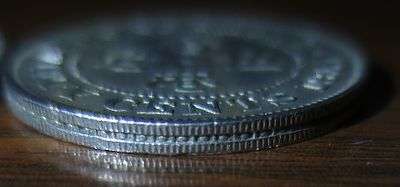Reeding
Numismatics

In numismatics, reeded edges are often referred to as "ridged" or "grooved" (US usage), or "milled" (UK usage).[3] Some coins, such as United States quarters and dimes, 1 euro, Australian 5, 10, 20 cents, 1 and 2 dollars, as well many other current coins, have reeded edges. One reason for having reeded edges was to prevent counterfeiting.[4][5] Some gold and silver coins were reeded to discourage clipping, i.e. scraping off the precious metals from the edge of the coin, to maintain its stated value in precious metal.[4] Another benefit of certain coins having reeded edges is that it helps enable different coin denominations to be easily identified and distinguished from each other by sense of touch alone.
Furniture
In furniture, reeding is sometimes used around bedposts, and the legs of tables and chairs. Its use in this fashion was inspired by Greek and Roman architectural styles,[6] and is the opposite of fluting.
Architecture
In architecture, reeding is a form of molding usually found on columns, and is sometimes considered to be synonymous with gadrooning.[7]
See also
References
- The Free Dictionary: "Reeding"
- Dictionary.com: "Reeding"
- Concise Oxford Dictionary (2006): mill, produce regular ribbed markings on the edge of (a coin)
- Headley, Susan (March 3, 2017). "Reeded Edge Defined - What is a Reeded Edge?". The Spruce. Retrieved July 23, 2017.
- Why do some coins have ridges around the edges?
- "reeded leg"
- Encyclopædia Britannica: "Fluting and Reeding"